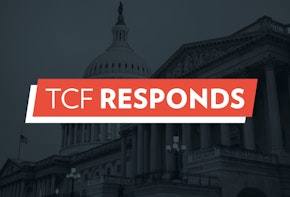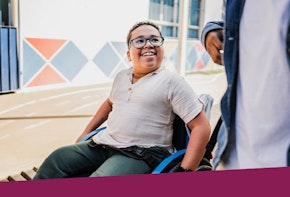March 2020 marked a watershed moment in U.S. public education. As the COVID-19 pandemic took hold across the country, essentially all public schools closed their campuses for hastily launched distance learning programs.1 Weeks stretched into months that ultimately consumed the rest of the 2019–20 academic calendar and—in many cases—large chunks of the 2020–21 school year.
Despite heroic efforts from educators across the country, data suggest that schools’ pandemic responses were not especially effective at supporting children from historically marginalized communities, particularly English learners (ELs). Existing digital divides created access inequities, with EL students disproportionately likely to lack the devices, connectivity, and/or digital literacy skills necessary to access their schools’ virtual learning programs. The social isolation of the pandemic interrupted many ELs’ linguistic and academic development. More broadly, the pandemic created a host of problems for the families of ELs, who are frequently members of communities of color and/or immigrant communities. These communities have been disproportionately affected by the pandemic and are likely to face greater health2 and economic3 risks than their peers.
As widespread vaccine access and changing political winds make in-person school reopening more likely at some point this fall, schools must prioritize EL students’ needs. But how? The pandemic has been an unprecedented crisis; there is no research base for best practices for serving EL students via distance learning under these circumstances. Nor is there anything like field consensus for how to transition a school district—let alone a state or an entire country—from virtual learning back to in-person instruction.
Since last summer, The Century Foundation’s EL Virtual Learning Forum has regularly convened hundreds of EL-serving teachers and administrators to discuss how their pandemic learning approaches were serving these students. Forum participants shared questions, ideas, and resources for supporting ELs’ success during the pandemic via asynchronous discussions on various message boards and periodic video conversations as part of the Forum’s “Office Hours” series. These conversations provided Century Foundation researchers a window into a wide range of teachers’ challenges and successes in virtual, hybrid, and in-person school and classroom settings across the country.
This trove of educator reflection provides a uniquely firm foundation for guiding schools as they prepare to reengage these students in the fall. Schools are receiving significant amounts of federal pandemic recovery resources through the Elementary and Secondary School Emergency Relief (ESSER) funds.4 As they work out how to use these funds this fall, education leaders must focus significant amounts of their resource investments on meeting ELs’ needs.
This report distills from the EL Virtual Learning Forum’s conversations to provide a series of concrete actions that educators and policymakers should take to ensure that ELs get the educational opportunities they deserve. Specifically, this fall and beyond, the following steps should be taken:
- Schools should authentically reengage ELs’ families in linguistically and culturally competent ways.
- Schools should treat ELs in a holistic manner, recognizing that their linguistic development is inseparable from their academic development and their social-emotional well-being.
- Schools should—at the earliest possible moment—gather data on ELs’ linguistic and academic development so they can target in-school pandemic recovery efforts to meet these students where they are.
Throughout their pandemic recovery efforts, schools should identify how pandemic learning inequities were often grounded in structural inequities that predated the pandemic—and make concrete efforts to dismantle those within their control. Indeed, in an interview for an article published one year into the pandemic,5 Californians Together executive director Martha Hernández said, “Despite the many tragedies of the pandemic, one silver lining for English learners has been that many are spending additional time at home, immersed in safe, linguistically and culturally affirming spaces—rather than marginalizing English-only environments at school.”
That is, COVID-19 did not suddenly make weak or ineffective engagement of ELs’ families into a widespread problem in U.S. schools. The pandemic did not force schools to launch language instruction models that pulled ELs from academic courses into segregated English as a second language (ESL) settings where they were working on learning English apart from their English-dominant peers. The pre-existing inequities experienced by ELs created new, critical challenges during pandemic learning, but this is only because pandemic learning replicated and exacerbated harmful patterns that were already well established in many U.S. schools.
Schools cannot simply focus on the “learning” that EL students “lost.” They must instead focus on overhauling the practices, policies, and other structures that made the months since March 2020 so dramatically unfair to these students.
This frustrating reality must be the lodestar for schools shifting from emergency pandemic responses to equitable pandemic recovery: they cannot simply focus on the “learning” that EL students “lost.” They must instead focus on overhauling the practices, policies, and other structures that made the months since March 2020 so dramatically unfair to these students.
Family Engagement, Relationships with Students
Pre-Pandemic
Since 1974, U.S. schools have been required by federal civil rights law to “take appropriate action to overcome language barriers that impede equal participation by its students in its instructional programs.”6 While many schools have worked to improve how they communicate with ELs’ families, much remains to be done. Basic translation and interpretation services were already a challenge for too many schools.7
Pandemic
The pandemic did not improve access to information in families native language. Journalists and researchers alike found significant evidence that schools across the country did not adequately translate and/or interpret communications with linguistically diverse families.8 A spring 2020 survey found that nearly one-third of linguistically diverse California families did not understand the distance learning communications they were receiving from their children’s schools.9 Data from Talking Points,10 a commonly used school-family communications app, suggest that Spanish-speaking families were less likely to report feeling prepared to help with distance learning than their English-speaking counterparts.
Perhaps unsurprisingly, then, some data suggest that these students were particularly likely to be chronically absent from distance learning programs during the pandemic.11 Conversations with educators on the EL Virtual Learning Forum over the past year suggest that this pattern may be common in communities across the country. Forum participants shared that many of their EL students took on additional work and covered child care to help their families through the pandemic, and these new responsibilities contributed to disengagement from pandemic learning over the academic year.
Parents should be in groups meeting with the teachers . . . give those parents a chance to say, ‘This is what I’d rather see you teaching my kid, this is what I want, this is how I want you to engage with me, here are my priorities.’ Let them take the lead as truly being respected partners in the education process.
—Kathleen Anderson, ESOL teacher, Prince George’s County Public Schools, Maryland
Post-Pandemic
Translation and interpretation services are just a baseline minimum for supporting ELs. Research suggests12 that better, deeper engagement with ELs’ families13 is a critical way to support these students. The pandemic only heightens the importance of this work.
As such, it is paramount that schools launch earlier, more frequent, and more comprehensive communication and engagement efforts targeted at reconnecting with ELs and their families. Further, as they work to re-engage these students, schools should prepare to listen, asking ELs’ families what they and their children need to succeed as the school year begins. This fall, schools should plan to do the following:
- Ask ELs’ families which languages they speak, read, and understand best, and use them for communications. Commit time, staffing, and resources toward ensuring that all school communications are translated—and school conversations with ELs’ families are interpreted—into languages that families understand.
- Hire multilingual family liaisons and other staff—optimally from within the same community—to facilitate culturally and linguistically competent communications with ELs and their families.
- Reach out to ELs’ families using multiple mediums—phone calls, mail, in-person visits, text messages, apps like TalkingPoints and WhatsApp, and more—and ask families for frequent feedback on which of these communication methods they prefer.
- Frame all reengagement outreach to ELs and their families in positive, constructive terms that foreground the opportunities students will have when school reopens in the fall—in lieu of messages that warn about “learning loss” from the past academic year.
- Establish and share with the school community a decision-making structure that gives ELs’ families a formal voice in contributing to school-level decisions about how pandemic recovery funds are spent and providing feedback on school policies, schedules, and activities. Depending on school contexts, this may include nominating an EL’s parent or caretaker to participate in a school leadership committee, establishing an EL Family Council, or a similar institutional structure.
Trauma and the Importance of Social-Emotional Health and Wellbeing
Pre-Pandemic
In recent years, researchers, educators, and advocates have rediscovered the inherent social and emotional aspects of academic learning. In general, students who are socially adept and emotionally healthy are generally better prepared to learn academic skills and knowledge. Many ELs bring these sorts of social-emotional learning (SEL) assets to school with them. For instance, there is some evidence that young ELs’ emerging bilingualism may convey SEL benefits.14 And yet, many ELs regularly experience stressors that create the need for more SEL supports in school: they are disproportionately likely to be children of color15 and be growing up in families struggling with poverty,16 which means that they frequently face systemic racial and socioeconomic biases in U.S. schools and society. Further, while the bulk of ELs in U.S. schools are native-born U.S. citizens,17 many are children of immigrants and/or live in immigrant communities that have faced stress, anxiety, and even trauma18 from shifting immigration policies and their uncertain enforcement,19 These intersecting inequities make it more likely that ELs are forced to navigate stressors related to poverty and structural racism.
Pandemic
During the pandemic, an early poll in California found that nearly 40 percent of ELs’ families were dealing with food insecurity.20 A fall 2020 survey of Spanish-speaking families in the state found that digital divides continued to stymie roughly one in six households21. And in January 2021, a survey of EL-serving educators found that more than one-third said that few of their EL students had reliable Internet access.22 Many educators worried about ELs losing opportunities to develop their emerging language proficiencies—in English and their native languages—because of social and/or linguistic isolation brought on by the pandemic.23
[Some] are not going to say anything when they come back because they don’t know what to say or how to act with the other students because they’ve only been at home doing family things. And what is normal at their home might not be normal at school, and they have to learn the culture of being a student as well, and you’re not learning it in the Zoom setting.
—Jamie Trimmer, ESL Teacher, Haslett Public Schools, Michigan
Post-Pandemic
Every child that returns to school this fall will have weathered some parts of the pandemic’s global trauma. Some children will have experienced illness or death within their families from COVID-19. Many will have faced economic hardship, food insecurity, and/or housing instability related to adults in their families losing wages or jobs due to pandemic lockdowns. In many communities, students will have spent most of the preceding eighteen months largely relying on some form of virtual learning as the model for their pandemic-era education.
In many cases, English learners will have faced significantly more adversity than their peers. To equitably support these children—indeed, to adequately support all children—schools should focus their early fall schedules and instruction on helping them rebuild their social skills.
In many cases, English learners will have faced significantly more adversity than their peers.24 To equitably support these children—indeed, to adequately support all children—schools should focus their early fall schedules and instruction on helping them rebuild their social skills. They need opportunities to relearn how to participate constructively in learning spaces with their teachers and peers. Schools can make students more comfortable and productive on campuses this fall by including SEL and broader student reacclimation efforts in their fall planning. Educators can support ELs’ success by ensuring that these children have ample opportunities to speak, listen, write, and read in all the languages that they know. Specifically, schools should do the following:
- Devote a majority of the first week—and perhaps much of the second week—of the academic year to primarily social events that give ELs a chance to talk and play with their peers. These should begin with socially focused events—such as field day”25 —that include a full slate of icebreaker26 activities. Plan informal time to start, and gradually work toward more intentional social and linguistic activities that prepare students for working together in more formal learning environments.
- Establish or reinforce existing protocols for identifying children who may be suffering from pandemic-related trauma. Provide educators with guidance about linguistically and culturally sensitive approaches to engaging children around these challenges. Ensure that there are intervention systems in place for providing escalating levels of support for children who need it.
- Make regular, authentic use of social and academic language a top-tier instructional priority for ELs throughout the entire school year—during both academic instruction and in ESL settings.
- Design and deliver SEL lessons that directly address the pandemic and the damage it caused to give students—particularly ELs—low-pressure opportunities to share challenges they are facing and/or process stress they may be carrying.
Getting Data, Targeting Instruction, Accelerating (Linguistic and Academic) Learning
Pre-Pandemic
The methods the U.S. school system uses for measuring ELs’ linguistic and academic development have long suffered from poor design.27 In essence, American schools are charged with identifying students as ELs because these children’s emerging language proficiencies are deemed to make it unlikely that they will succeed on English-language academic assessments—but schools are then simultaneously penalized when those same students do not succeed on those same assessments.
And yet, despite their imperfections, these measurement methods still make it clear that too many U.S. schools do a poor job of supporting ELs’ success. In many schools, ELs are pulled out of academic classes to learn English. Research indicates that this instructional approach is not the most effective way to ensure that all ELs develop full English proficiency and succeed academically.28 Studies29 regularly show30 that a large percentage of ELs—sometimes as high as 20 percent—struggle to reach academic English proficiency, even after many years enrolled in U.S. schools.
Pandemic
Many educators—including EL Virtual Learning Forum members—praised their EL students’ rapid acquisition of digital literacy and independent research skills.31 Some reported that their ELs’ native language skills appeared to be growing during pandemic lockdowns.32
But in general, these students’ needs were often overlooked33 in schools’ pandemic learning plans.34 As noted above, ELs were particularly likely to suffer from digital divides and other opportunity gaps during the pandemic’s distance learning periods. In far too many cases, schools were unable to support and engage these students virtually.
In the EL Virtual Learning Forum’s first twelve months, no question was more common from participating educators than “How can we integrate ELs’ linguistic support services with academic instruction during distance learning?” That is, ESL teachers who would customarily join mainstream academic classrooms to support ELs learning (and language development) were—as a group—struggling to devise ways to join and support ELs in most virtual learning spaces. Educators frequently reported having limited time to work with ELs directly during their distance learning schedules and expressed concern at how many of these students became frustrated and disengaged during the school year.
ELs were among the student groups most impacted by the pandemic and related opportunity gaps, scoring much lower on math and English language arts (ELA) assessments than researchers would have anticipated in a normal academic year.
Indeed, existing data suggest that these instructional models were uniquely ineffective for most ELs. A June 2021 study from California’s CORE-PACE Research Partnership found that ELs were among the student groups most impacted by the pandemic and related opportunity gaps, scoring much lower on math and English language arts (ELA) assessments than researchers would have anticipated in a normal academic year.35 Researchers in Washington State found that ELs were more likely than children in other student groups to be receiving failing, incomplete, or no-credit grades.36 Virginia’s Fairfax County Public Schools found similar patterns for ELs in their schools.37
Post-Pandemic
I know that we may be familiar with that ‘mute’ effect during zoom instruction. Most of them are on mute most of the time. . . So basically I feel like maybe they did not have enough opportunities to speak and practice their speaking. So it will be quite a chance for us when we return to find opportunities for them to engage in authentic conversation.
—teacher and EL Virtual Learning Forum Participant who asked to remain anonymous
Educators participating in the EL Virtual Learning Forum repeatedly shared that their EL students were struggling to maintain their progress learning English during distance learning. Many suggested that virtual learning made it difficult for these students to take risks and experiment with their usage of English in group work or social settings with peers. Further, many expressed frustration at how little benchmarked information they were able to gather about their students’ progress.
Gains in [ELs’ native languages] might not be capitalized as we are trying to have more of an English focused curriculum . . . how can we do a better job of honoring and acknowledging and incorporating those gains moving forward?
—Hannah Cousino, manager, Equity and Access, DC Public Charter School Board
As students return in the fall, schools need to prioritize targeted diagnostic assessments that identify how each EL student progressed in their language acquisition and academic development during the pandemic. Data from these assessments must be used to guide the investment of pandemic recovery funding, student groupings, and both ESL and general academic instruction throughout the school year. Finally, educators should prioritize instruction and activities38 —such as project-based learning activities—that allow ELs authentic opportunities to advance both their linguistic and academic development. Specifically, schools should do the following:
- Design and implement—in the first month of the school year—a plan for administering a full range of diagnostic assessments that will provide teachers with actionable information about ELs’ linguistic and academic development. Plan large blocks of time for these assessments to ensure that students have sufficient time to reacclimate to school-based testing and can demonstrate the full breadth of their skills and knowledge.
- Dedicate pandemic recovery resources to expanding available diagnostic tools to include academic assessments in ELs’ native languages.
- Provide EL students with targeted, small group instruction that addresses their post-pandemic linguistic and academic needs.
- Set clear, measurable, and differentiated growth goals for individual ELs’ linguistic and academic development. Plan and implement regular formative assessments to ensure that students remain on track.
- Incorporate ESL services into academic settings and/or design school schedules to ensure that ELs can receive ESL instruction without missing academic instruction.
- Hire multilingual teachers and tutors to support ELs’ pandemic gains in their native language development as well as providing targeted academic and English language acquisition instruction.
Lessons Learned for a Post-COVID Future
The COVID-19 pandemic is a generational crisis, the sort of epochal event that will shape U.S. society, schools, and families for many decades. As educators prepare for a still-elusive post-pandemic educational moment, this framing is critical. They cannot unwind the pandemic—but must use it to acknowledge and build beyond the longstanding inequities that the pandemic only further exploited.
This fall, schools should build upon the advances educators and students were forced to make during the pandemic. When schools had to scramble to bring virtual learning models into existence, they were also forced to make large-scale efforts to close digital divides that spanned devices, broadband access, and digital literacy skills. Many EL Virtual Learning Forum participants said that this opens a range of possibilities for schools—enhanced abilities for machine-translated communications with ELs’ families, online scheduling of conferences, extended virtual learning opportunities, and more. Schools should embrace these new capacities to broaden and deepen the learning experiences available to their EL students.
I think schools and teachers should think about how we can use the digital literacy skills that students have gained this past year. . . And that might completely change the way that I see a classroom or the way that I teach, but they’ve learned so much, and digital literacy is only going to continue to be more important for kids, so just find ways to implement that as best as you can.
—Bettina Arrunategui, first grade teacher, Arlington Public Schools, Virginia
Meanwhile, the growth of many ELs’ native language development during the pandemic should be recognized as the asset that it is. As schools use pandemic recovery funds to add staff and bulk up EL instructional programming, they should recognize this moment as an inflection point and commit to offering multilingual language support and/or instruction for their EL students. When possible, they should look to hire ELs’ families and/or other linguistically and culturally competent community members to support ELs’ emerging bilingualism and long-term academic success.39
As schools begin the uncertain process of reopening campuses and reengaging ELs’ families—many of whom remain anxious about the safety of sending their children back to in-person instruction—it is critical that educators offer them meaningful agency in charting a course for their children’s educations. ELs’ families deserve concrete ways of informing and guiding their schools’ pandemic recovery efforts.
The pandemic forced us to blow up a lot of preconceived notions and systems, and I think that allowed for schools to think more critically about the ways that they engage and support all students, but especially English learners. And so it is about keeping up that momentum, it’s about really ensuring that your schools return to school plan is inclusive, that it’s really intentional about the way that we embed English learner instructional supports into the school day.
—Hannah Cousino, manager, Equity and Access, DC Public Charter School Board
Post-pandemic education will never—and should never—entirely return to pre-pandemic norms. This fall, the challenge for schools and educators is to begin the awkward, difficult work of creating their communities’ post-pandemic future. Unless they plan to upend the inequitable structures that preceded and shaped pandemic learning, educators can expect a further deepening of those systemic biases. After nearly a year and a half of pandemic uncertainty, children—particularly ELs—deserve to chart a better, more equitable path.
Acknowledgments
This brief benefited immensely from the outstanding research and editing support from Caroline Osborn. Hannah Cousino, Rohini Ramnath, Alicia Passante, and several other educators who asked to remain anonymous provided constructive feedback. Our TCF colleague Richard Kahlenberg also provided several key suggestions. Finally, this project—and the broader work of the EL Virtual Learning Forum—would not have been possible without generous support from the Heising-Simons Foundation.
Notes
- Stacey Decker, Holly Peele, and Maya Riser-Kositsky, “The Coronavirus Spring: The Historic Closing of U.S. Schools (a Timeline),” Education Week, July 1, 2020, https://www.edweek.org/leadership/the-coronavirus-spring-the-historic-closing-of-u-s-schools-a-timeline/2020/07.
- “Hospitalization and Death by Race/Ethnicity,” Centers for Disease Control and Prevention, last updated July 16, 2021, https://www.cdc.gov/coronavirus/2019-ncov/covid-data/investigations-discovery/hospitalization-death-by-race-ethnicity.html.
- Hamutal Bersntein, Dulce Gonzalez, and Michael Karpman, “Adults in Low-Income Immigrant Families Were Deeply Affected by the COVID-19 Crisis yet Avoided Safety Net Programs in 2020,” Urban Institute, May 2021, https://www.urban.org/sites/default/files/publication/104280/adults-in-low-income-immigrant-families-deeply-affected-by-pandemic-yet-avoided-safety-net_0.pdf.
- “Department of Education Announces American Rescue Plan Funds for All 50 States, Puerto Rico, and the District of Columbia to Help Schools Reopen,” U.S. Department of Education, March 17, 2021, https://www.ed.gov/news/press-releases/department-education-announces-american-rescue-plan-funds-all-50-states-puerto-rico-and-district-columbia-help-schools-reopen.
- Conor P, Williams, “OPINION: Creating better post-pandemic education for English learners,” The Hechinger Report, March 19, 2021, https://hechingerreport.org/opinion-creating-better-post-pandemic-education-for-english-learners/.
- 20 U.S.C. § 1703(f).
- “Translation,” Office for Civil Rights Recent Resolution Search, last modified July 23, 2020, https://ocrcas.ed.gov/ocr-search?sort_order=ASC&sort_by=field_recipient_name&keywords=translation*.
- Reema Amin, “Immigrant students will need more support next school year. Improved translation services are high on the wishlist,” Chalkbeat, June 28, 2021, https://ny.chalkbeat.org/2021/6/28/22554704/immigrant-families-nyc-more-support-improved-translation-budget.
- “Learn. Pivot. Re-Adapt. Surviving a New Norm,” Parent Institute for Quality Education, 2020, https://www.piqe.org/wp-content/uploads/2020/05/FINAL-LIFTING-UP-VOICES.pdf#page=7.
- “Family Engagement, COVID-19, and Distance Learning: Data & Insights from the Field,” Talking Points, 2020, 3, https://talkingpts.org/wp-content/uploads/2020/08/TalkingPoints_Research-_Family_Engagement_and_Distance_Learning__Data__Insights_from_the_Field.pdf#page=3.
- Hedy N. Chang et al., “Chronic Absence Patterns and Prediction During COVID-19: Insights from Connecticut,” Attendance Works and the Connecticut Department of Education, June 2021, 5, https://www.attendanceworks.org/wp-content/uploads/2019/06/Chronic_Absence_in_CT_062421.pdf#page=5.
- “Promising and Effective Early Care and Education Practices and Home Visiting Programs for Dual Language Learners,” in Promoting the Educational Success of Children and Youth Learning English: Promising Futures, (Washington, DC: The National Academies Press, 2017), 170, doi: 10.17226/24677.
- “Programs for English Learners in Grades Pre-K to 12,” in Promoting the Educational Success of Children and Youth Learning English: Promising Futures, 277.
- “Promising and Effective Early Care and Education Practices and Home Visiting Programs for Dual Language Learners,” in Promoting the Educational Success of Children and Youth Learning English: Promising Futures,174.
- C. de Brey et al., “Status and Trends in the Education of Racial and Ethnic Groups 2018 (NCES 2019-038),” U.S. Department of Education, National Center for Education Statistics, 2019, 60, https://nces.ed.gov/programs/raceindicators/indicator_rbc.asp.
- “The Demography of the English Learner Population” in Promoting the Educational Success of Children and Youth Learning English: Promising Futures, 81.
- “The Demography of the English Learner Population,” in Promoting the Educational Success of Children and Youth Learning English: Promising Futures, 74.
- Conor Williams and Rosario Quiroz Villarreal, “Back to School but Nothing’s Normal. Schools Mobilize to Help Children of Immigrants After Traumatic Summer,” the74million, September 15, 2019, https://www.the74million.org/article/back-to-school-but-nothings-normal-schools-mobilize-to-help-children-of-immigrants-after-traumatic-summer/#.
- Patricia Gándara and Jongyeon Ee, “U.S. Immigration Enforcement Policy and Its Impact on Teaching and Learning in the Nation’s Schools,” The Civil Rights Project, February 28, 2018, https://www.civilrightsproject.ucla.edu/research/k-12-education/immigration-immigrant-students/u.s.-immigration-enforcement-policy-and-its-impact-on-teaching-and-learning-in-the-nations-schools.
- Kristin Costa and Stephanie Ong, “Poll: Coronavirus Crisis Puts Parents’ and Young Children’s Well-being at Risk,” The Education Trust—West, April 30, 2020, https://west.edtrust.org/press-release/poll-coronavirus-crisis-puts-parents-and-young-childrens-well-being-at-risk/.
- “Survey reveals continued inequities and barriers,” Community Needs Assessment Fall 2020, Parent Institute for Quality Education, February 15, 2021, https://www.piqe.org/fallsurvey2020/.
- Rosario Quiroz Villarreal, “What Educators Need to Support English Learners,” Next100, January 13, 2021, https://thenext100.org/what-educators-need-to-support-english-learners/.
- Conor Williams, “How Best to Serve English Learners during a Pandemic,” The Century Foundation, August 25, 2020, https://tcf.org/content/commentary/best-serve-english-learners-pandemic/.
- Conor Williams, “New Data Tell How We Can Better Meet English Learners’ Needs This Fall,” The Century Foundation, September 15, 2021, https://tcf.org/content/commentary/new-data-tells-can-better-meet-english-learners-needs-fall/.
- Laura Jackson, “50 Field Day Ideas, Games and Activities,” Signup Genius, https://www.signupgenius.com/school/field-day-ideas-games-activities.cfm.
- Heather Harper, “32 Best Icebreaker Games for Your Team (Instructions),” Quiz Breaker, February 17, 2021, https://www.quizbreaker.com/icebreaker-games.
- Conor Williams, “New Studies Hint at Clearer Ways to Measure English Learners’ Performance,” The Century Foundation, February 20, 2020, https://tcf.org/content/commentary/new-studies-hint-clearer-ways-measure-english-learners-performance/.
- Ilana M. Umansky and Sean F. Reardon, “Reclassification Patterns Among Latino English Learner Students in BIlingual, Dual Immersion, and English Immersion Classrooms,” American Educational Research Journal 51, no. 5 (October 2014), https://doi.org/10.3102/0002831214545110.
- Marisa de la Torre et al., “English Learners in Chicago Public Schools: A New Perspective,” UChicago Consortium on School Research, December 2019, https://consortium.uchicago.edu/publications/English-learners-in-Chicago-public-schools.
- Karen D. Thompson, “English Learners’ Time to Reclassification: An Analysis,” Educational Policy 31, no. 3 (August 2015): 330–63, https://doi.org/10.1177/0895904815598394.
- Conor Williams, “Williams: Let’s Keep the Innovations the Pandemic Brought to Teaching English Learners and Reaching Their Families,” the74million, May 9, 2021, https://www.the74million.org/article/williams-lets-keep-the-innovations-the-pandemic-brought-to-teaching-english-learners-and-reaching-their-families/.
- Conor Williams, “English Learners Are Home with Their Home Languages, and That’s Okay,” The Century Foundation, May 12, 2020, https://tcf.org/content/commentary/english-learners-home-home-languages-thats-okay/.
- Conor P. Williams, “School Closure and English Learners: A Review of COVID-19 Operations Written Reports,” Californians Together, September 2020, https://californianstogether.app.box.com/s/bktwfcbv8kj4bqqjn3gdflpcumau18um.
- Conor Williams and Manuel Buenrostro, “Teaching and Learning During Uncertain Times: A Review of Learning Continuity and Attendance Plans,” Californians Together, 2021, https://californianstogether.app.box.com/s/rav5ijloodoo52due4bcybh45sefo51d.
- Libby Pier et al., “COVID-19 Impacts on Student Learning: Evidence from Interim Assessments in California,” PACE, June 2021, 17, https://edpolicyinca.org/sites/default/files/2021-06/r_pier_jun2021.pdf#page=20.
- Isaac Kwakye and Emma Kibort-Crocker, “Facing Learning Disruption: Examining the Effects of the COVID-19 Pandemic on K-12 Students,” Washington Student Achievement Council, March 2021, 7, https://wsac.wa.gov/sites/default/files/2021-03-30-COVID-Learning-Disruption-Report.pdf#page=7.
- “Study of Teaching and Learning During the COVID 19 Pandemic: Analysis of Q1 Secondary Marks,” Fairfax County Public Schools Office of Research and Strategic Improvement, November 2020, https://go.boarddocs.com/vsba/fairfax/Board.nsf/files/BVJV847F7247/$file/Q1%20Marks%20Rpt%20-%20v6%20lzh.pdf.
- Marguerite Lukes et al., “Re-Engaging Multilingual Learners Post-Pandemic:
Lessons from Internationals Network for Public Schools,” Internationals Network, 2021, 39, https://www.internationalsnetwork.org/wp-content/uploads/2021/07/Re-Engaging-Multilingual-Learners-Post-Pandemic.pdf#page=39. - Caroline Osborn, “Supporting English Learners, Supporting Families: Using Community-Based Tutoring Programs to Accelerate Learning,” The Century Foundation, July 20, 2021, https://tcf.org/content/commentary/supporting-english-learners-supporting-families-using-community-based-tutoring-accelerate-learning/.











